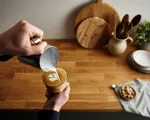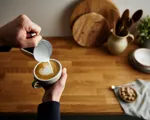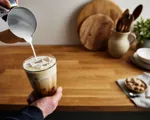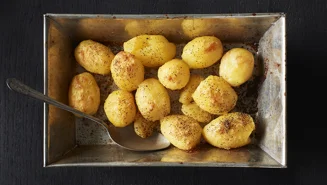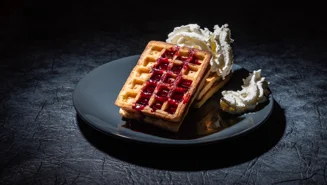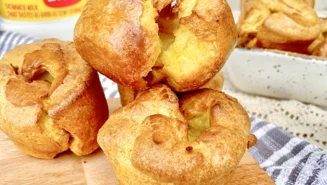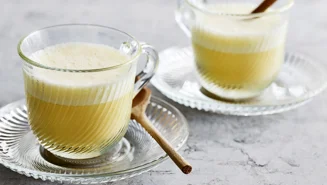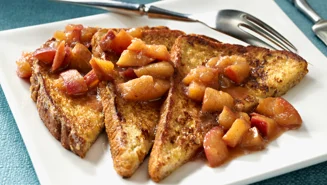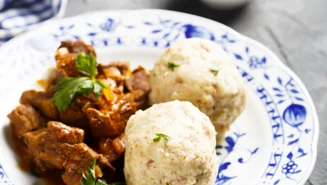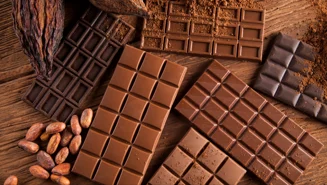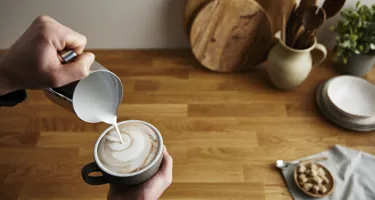
What’s the difference between a cappuccino vs latte vs flat white? Choose the perfect coffee, thanks to our resident barista who has outlined their characteristics.
What Are The Differences?
Learn about the differences between a latte, a flat white, and a cappuccino.
What Is A Flat White?
A flat white has a strong espresso flavour and a smooth velvety texture. It features steamed milk and a small amount of microfoam. A flat white is typically 150-180ml served in a short wide ceramic cup.
What Is A Caffe Latte?
A latte has a milder espresso flavour as it contains a larger volume of milk and microfoam. It is usually 150-240ml and traditionally served in a short glass.
What Is A Cappuccino?
Traditionally drunk only in the morning in Italy, a cappuccino has a more distinct layering of components, frothier milk, and a creamy texture to the coffee. It is typically 150-240ml and served in a short ceramic cup that’s widest at the top.
Coffee Shots Used
- Latte can be made with a base of single espresso or a double espresso shot according to your preference. Single = 15-20g liquid espresso from 7-10g ground coffee in most cases. Doubles are 30-40g liquid espresso from 14-20g ground coffee. How to make a latte
- Cappuccinos can be single or double espresso shots, but we recommend a single in small cups of 150ml-200ml, and doubles for larger cups. How to make a cappuccino
- Flat whites are exclusively made using the double ristretto shot of 30-40g in liquid espresso weight, generally starting with 14-20g coffee as a ground dose. How to make a flat white
Ratios
- Latte would be around 1 part coffee to 4 parts milk to 1 part foam.
- Cappuccino would be 1 part coffee to 3 parts milk to 2 parts foam.
- Flat white would be 2 parts coffee to 3 parts milk to 1 part foam.
Cup Size & Type
These ratios can be applied to any cup size to suit your preference at home but we recommend trying the below sizes to hit traditional standards as a starting point before scaling things up:
- Caffe latte - 150-240ml traditionally in a short glass.
- Cappuccino - typically 150-240ml in a short ceramic cup widest at the top.
- Flat white - typically 150-180ml in a short wide ceramic cup.
It can be hard to find cups at this size in the shops, but specialist coffee brands and independent coffee shops will often sell traditional cups and glasses.
Foam Depth
- Caffe latte - thinner foam depth than a cappuccino regardless of serving choice, to avoid the ‘milk moustache’ and to allow for latte art free pouring - aerate to a target of a third growth in milk volume.
- Cappuccino - thickest foam depth of the coffee beverages, often greater than 2cm in depth to permit the tasting experience to be separated between milk foam and liquid coffee. Aerate your milk to a growth of two-thirds in volume to create the necessary type of foam for this.
- Flat white - 0.5-1.5cm foam depth. Ideally towards the lower end of this range with a smooth, silky foam.
- Hot chocolate - no standard exists here but we often aim for the one third volume growth as with a caffe latte as the drink texture desired by many drinkers is similar. Go for personal preferences as you may also enjoy a hot chocolate at cappuccino levels of foam where the aeration approaches two-thirds in milk volume growth.
- Cold foam iced latte - targeting a lower level of aeration of around one-third growth in volume suits this beverage well, but anything can be tried at home to suit your preference.
Pouring Style
- Lattes and flat whites are generally free-poured designs where steamed textured milk is added to an espresso base from further away (up to around 10cm from the cup/glass). Baristas then approach the cup closely when attempting a latte art design to finish.
- Cappuccinos are generally poured to achieve a foamy, shiny top without a latte art design, and are poured close to the espresso liquid, and foamed milk is almost skating across the surface of the drink to create a foam layer on top of the coffee liquid underneath it.
Flavours and Caffeine Content
- Latte: A latte has a milder espresso flavour than a flat white as it contains a larger volume of steamed milk. You can make a latte with a single or double shot of espresso.
- Cappuccino: Cappuccinos have a more distinct layering of components, with the coffee having more of a creamy texture. You can use a single or double shot of espresso to make a cappuccino.
- Flat White: A flat white is known for its stronger espresso flavour, as you tend to use less milk and less foam. You make a flat white with a double ristretto shot of 30-40g in liquid espresso weight.
Toppings
Of these 3 drinks, the only drink that tends to feature a topping included would be the cappuccino if you prefer it. and usually this is cinnamon or chocolate dusting.
Calorie and Fat Content
- Latte: A latte made with whole milk has approximately 190 calories and 10g fat.
- Cappuccino: A cappuccino made with whole milk has approximately 120 calories and 6g fat.
- Flat White: A flat white made with whole milk has approximately 140 calories and 7g fat.
Tips For Creating Differences In The Jug
Knowing what you’re doing when steaming and aerating milk is important for creating that perfect coffee.
Growing Milk
Growing milk by a certain volume inside the milk jug is the key part of the resulting milk foam depth.
- A third volume growth in milk volume (approximately of course, you don’t need to use a ruler) - this is suitable for all drinks except the cappuccino.
- Two-thirds growth in milk volume (approximately) suits a cappuccino’s deeper and richer foam level.
- A quarter growth in milk volume - this is something you can attempt or aim for if you wish to try the thinnest levels of foam seen occasionally in a flat white. This can actually allow some lovely and complex latte art, so worth a try if you are experimenting! How you grow that milk in volume is a key consideration to how glossy, shiny and luxurious the foam will feel.
With Arla Barista milk, you can form glossy, shiny and silky micro-foam by adding tiny bubbles to milk when you first begin steaming it from cold. This should be the focus of building your barista skill set - gaining the finesse of adding these tiny bubbles while heating milk to the end temperature of 60-65C.
Listen out for that gentle paper-ripping or chirping noise to know when you are adding tiny bubbles. The process is not loud and aggressive, it is gentle and requires minimal movement when done with finesse.
Remember - you need to be able to replicate what you are doing day after day, not just hit the goal once. So, try to find the angles and positions with your equipment that mean you can repeatedly hit the target aeration levels with a bit of a whirlpool motion in the jug, and without erratic movements of the hands or milk jug.
When you watch the pros, you may see that they barely seem to move at all when steaming milk to produce beautiful latte art coffees. A little movement may be notable early in the steaming process to add some foam into the jug as required, often with a tilt to the jug. Then they may raise their milk jug against the steam arm to deepen the steam tip a little into the milk (this stops the foaming part of the work and allows them to focus now on breaking any large bubbles and finishing at the right temperature without adding more foam by mistake).
Finally, they will hit the end temperature and halt the steaming process and begin polishing the milk to prepare it for pouring.
A final pro tip is to invest in a well designed milk jug that has a straight spout with a narrow beak to pour from. Perhaps even invest in a larger milk jug (larger than is required to fill your cup) so to allow yourself to decant your steamed and foamed milk. The secondary jug becomes your ‘pouring jug’ and the first is simply for steaming and heating only.
Flat White vs Latte vs Cappuccino FAQs
What is stronger a cappuccino or latte?
Whether you’re making a cappuccino or a latte, the strength will depend on how many shots of espresso you use. You can make either drink with one or two shots of espresso.
Which is stronger, cappuccino or flat white?
The strength of your coffee depends on how many shot of espresso you use, whether you make a flat white or a cappuccino. A flat white contains less milk and will have a stronger espresso flavour than a cappuccino but it doesn’t mean it’s necessarily stronger.
What tastes better, a flat white or latte?
It all depends on you. A flat white has a stronger espresso flavour whereas a latte has more of a creamy flavour as it contains more milk and foam. Which you choose is down to personal preference.
Should a flat white have foam?
Traditionally a flat white is made with a very small amount of foam, usually 0.5-1.5cm foam depth and no greater.
Choosing The Right Coffee For You
- Latte How to make a latte.
Choose a latte for a milder espresso flavour with more milk and microfoam.
- Cappuccino How to make a cappuccino.
Enjoy a cappuccino in the morning and for a more distinct layering of foam and a creamy coffee taste
- Flat White How to make a flat white.
Opt for a flat white for a stronger espresso flavour with less milk and microfoam.
